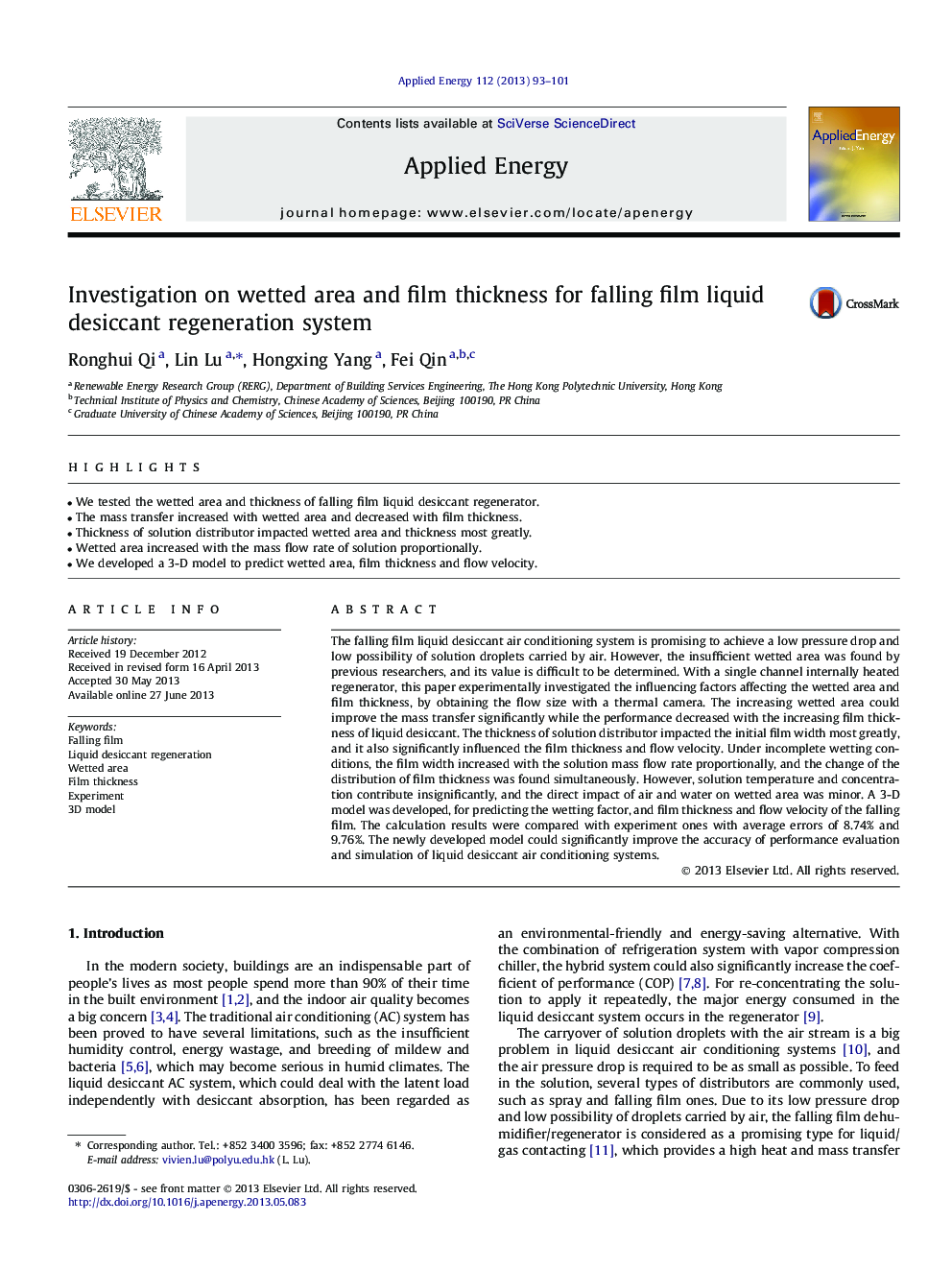| Article ID | Journal | Published Year | Pages | File Type |
|---|---|---|---|---|
| 242884 | Applied Energy | 2013 | 9 Pages |
The falling film liquid desiccant air conditioning system is promising to achieve a low pressure drop and low possibility of solution droplets carried by air. However, the insufficient wetted area was found by previous researchers, and its value is difficult to be determined. With a single channel internally heated regenerator, this paper experimentally investigated the influencing factors affecting the wetted area and film thickness, by obtaining the flow size with a thermal camera. The increasing wetted area could improve the mass transfer significantly while the performance decreased with the increasing film thickness of liquid desiccant. The thickness of solution distributor impacted the initial film width most greatly, and it also significantly influenced the film thickness and flow velocity. Under incomplete wetting conditions, the film width increased with the solution mass flow rate proportionally, and the change of the distribution of film thickness was found simultaneously. However, solution temperature and concentration contribute insignificantly, and the direct impact of air and water on wetted area was minor. A 3-D model was developed, for predicting the wetting factor, and film thickness and flow velocity of the falling film. The calculation results were compared with experiment ones with average errors of 8.74% and 9.76%. The newly developed model could significantly improve the accuracy of performance evaluation and simulation of liquid desiccant air conditioning systems.
•We tested the wetted area and thickness of falling film liquid desiccant regenerator.•The mass transfer increased with wetted area and decreased with film thickness.•Thickness of solution distributor impacted wetted area and thickness most greatly.•Wetted area increased with the mass flow rate of solution proportionally.•We developed a 3-D model to predict wetted area, film thickness and flow velocity.
